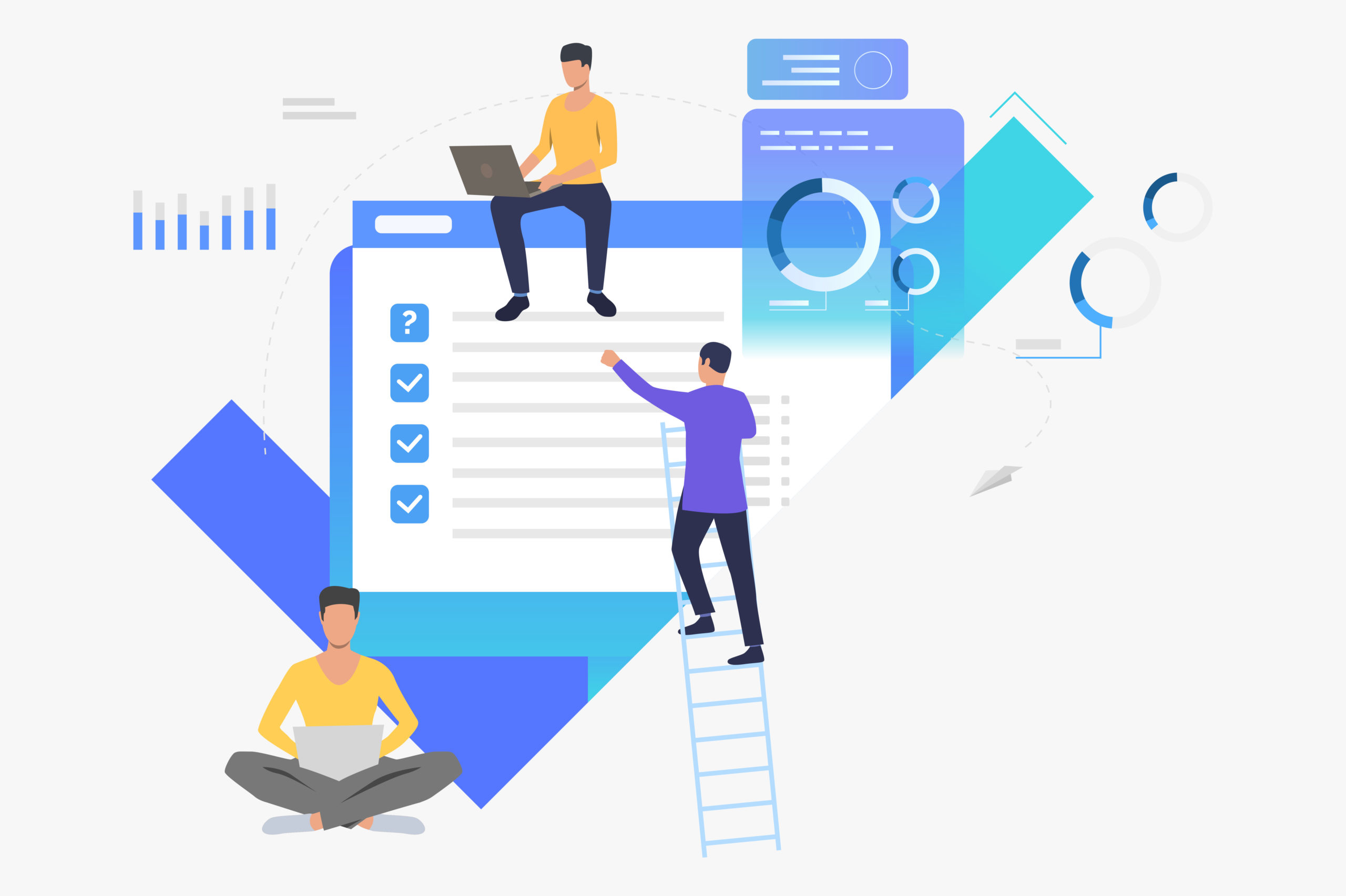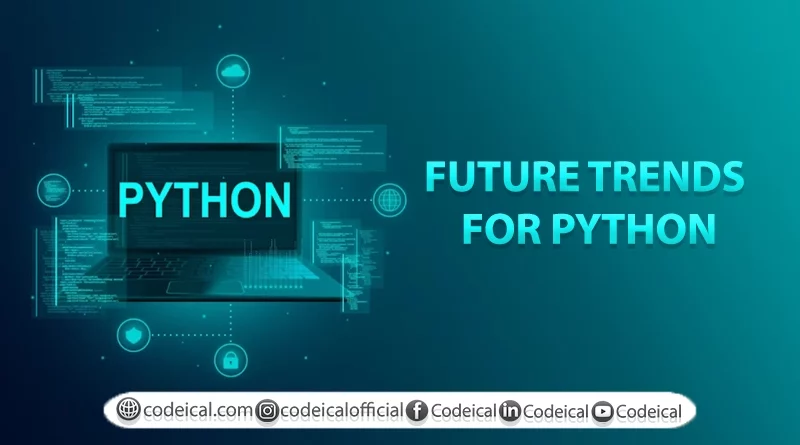Future Trends for Python
In this article, I’m going to tell you about the future trends for python
Python serves a myriad of applications, spanning from web development and mobile app creation to the realms of data science. Renowned for its versatility, it stands as the swiftest-growing programming language, attaining considerable acclaim on platforms like Stack Overflow. Its widespread adoption speaks to its adaptability and broad utility across diverse domains, making it an indispensable tool for developers navigating the multifaceted landscape of contemporary software engineering. The surge in Python’s popularity is indicative of its ability to seamlessly address the evolving needs of the tech industry, solidifying its position as a powerhouse in the programming world.
According to the Forbes report, Python experienced an impressive surge of 456% in 2018—an astounding figure, isn’t it? To delve into the business landscape, major players like Netflix and IBM have embraced Python, and countless other companies have followed suit, including the notable example of Dropbox.
Python’s allure lies in its capability to significantly slash development time when compared to languages like JAVA. This efficiency, often referred to as the “power of Python,” translates into tangible time savings, transforming tasks that once took 3 hours into mere 30 minutes. Sound unbelievable? It’s the reality with Python. In this article, we will explore the driving forces behind Python’s past and present growth, and prognosticate on the future trends shaping its trajectory.
It Can Be Used For Many Purposes
Python serves a myriad of applications, spanning from web development and mobile app creation to data science. Remarkably, its accelerated ascent to becoming the fastest-growing programming language is attributed predominantly to its burgeoning role in the realm of data science.
A noteworthy surge is witnessed in the utilization of Python for app development, transforming the landscape of the app development market into a realm dominated by Python. The ‘pythonization’ of this market is a verifiable phenomenon. The question then arises: What fuels the sustained rise in Python’s popularity and widespread adoption, especially in the context of app development? Herein lie some elucidations.
More And More Developers Choose Python
Python stands as the preferred programming language for a significant number of students and proficient developers alike. A substantial community comprising both aspiring and current programmers seeks guidance on the essential skills to acquire for securing real job opportunities. It seems impractical for most individuals to invest time in mastering skills that lack demand in the job market. Notably, Python is currently experiencing a surge in demand, reinforcing its relevance.
The mounting interest in data science programs and the increasing endorsements for Python’s utility contribute to a continuous rise in Python enthusiasts. As the ranks of data science students and programmers grow, along with heightened recommendations for Python adoption, the Python community is poised for sustained expansion.
It Is Versatile
Moreover, Python stands out for its exceptional versatility, serving as a multipurpose language that caters to a diverse range of tasks, including but not limited to web development and data science. The question arises: what factors contribute to Python’s remarkable expansion in these varied domains?
One approach to understanding this phenomenon involves scrutinizing the surge in traffic directed towards the most widely used Python packages. These packages, constituting a comprehensive collection and code stack within various open-source repositories, are continually evolving as dedicated individuals work towards enhancing existing methodologies.
An illuminating insight from Stack Overflow underscores the significant growth of the pandas package, signaling it as the fastest-growing Python package. Despite its introduction as recently as 2011, pandas now commands a noteworthy 1% share of Stack Overflow question views. This data strongly suggests that the ascendancy of data science plays a pivotal role in propelling Python to new heights as a preferred programming language.
The collaborative efforts of developers engaged in ongoing enhancements of open-source repositories underscore Python’s adaptability, contributing to its prominence in multifaceted applications. The surge in interest, particularly evident in the burgeoning popularity of Python packages like pandas, signifies a burgeoning demand for Python’s prowess in data science. As revealed by Stack Overflow statistics, the meteoric rise of pandas since its inception in 2011, reflected in its 1% share of question views, further solidifies the connection between Python’s growth and the burgeoning field of data science.
Python Is Free And Open Course Programming Language
Python is freely available, usable, and distributable, thanks to its development under an OSI-approved open-source license. This characteristic enables Python to serve as a platform for the exchange of ideas within the Python developers’ community, fostering a perpetual cycle of technological advancements. Consequently, the utilization of free Python not only facilitates educational endeavors but also contributes to a significant reduction in costs. This open-source nature empowers developers to collaboratively enhance the language, creating a dynamic ecosystem that propels innovation forward. The freedom to access, use, and distribute Python not only democratizes technology but also nurtures a culture of continuous improvement, ultimately benefiting the broader technological landscape. In essence, Python’s open-source foundation champions knowledge sharing, innovation, and accessibility, making it a driving force in the evolution of technology and education.
Easy Automation Of Tasks
Python remains a dominant force in automating a myriad of tasks, boasting an extensive array of packages and scripts that empower users to infuse automation into virtually any activity. Its versatility shines particularly in streamlining repetitive administrative duties, facilitating automated email dispatches, and executing HTTP requests seamlessly. Beyond these routine functions, Python’s automation prowess extends to the realm of marketing, where it can be harnessed to promote blog content across diverse platforms such as Facebook groups and Quora.
Enhancing the customer experience is another area where Python’s automation capabilities come to the fore, with the implementation of chatbots proving to be a valuable asset. These chatbots are no longer confined to text-only interactions; they now feature voice support, incorporating natural language processing functionalities in Python. This multifaceted approach not only elevates the efficiency of customer interactions but also underscores Python’s adaptability in addressing evolving technological needs.

One of the widely adopted programming languages for Machine Learning is Python. While there isn’t a specific programming language exclusively dedicated to Machine Learning, one can assess the capabilities of each language and choose the one that best suits their requirements.
IBM states that Python stands out as one of the most widely used and superior programming languages for Machine Learning.
In essence, Machine Learning involves instructing a machine to make precise decisions by leveraging data. Fundamentally, it revolves around identifying patterns within your dataset. In the professional realm, a crucial responsibility for a Machine Learning engineer is to extract, process, define, clarify, organize, and ultimately comprehend data in order to create intelligent algorithms. The significance of data cannot be overstated, and a thorough understanding of it is imperative.
Why is Python universally recommended? The answer lies in its simplicity, making it easily comprehensible for everyone.
Envision a scenario where the entirety of your surroundings is encapsulated as data—raw, unorganized, lacking completeness, and vast in its expanse. Python possesses the capability to effectively address and navigate through each of these challenges with adept proficiency.
It Is Battle-tested And Ready-To-Use
Python provides an extensive, rigorously tested, and readily applicable toolkit, capable of handling a myriad of tasks effortlessly. This versatile programming language offers a plethora of packages designed for diverse purposes, such as loading and manipulating data, visualizing datasets, converting inputs into numerical matrices, and facilitating machine learning endeavors along with assessment. All that’s required from you is to craft the code that seamlessly integrates these components. It’s as straightforward as that.
Business Applications
Python’s prevalence in crafting business applications is on the rise owing to its swiftness, scalability, and efficiency. Diverse sectors leverage Python to fabricate web applications, scrutinize data, and streamline operational processes. Furthermore, major corporations of considerable magnitude, exemplified by industry giants like Google, YouTube, and PayPal, rely on this programming language for executing expansive data operations, among various other applications. Python stands out as an optimal selection for data-centric solutions, as evidenced by its adoption by prominent platforms like Spotify.
So Is Python The Language For Now And Forever?
The app development industry is both voracious and adaptable. Trends shape the demand, and needs, in turn, define the current trends. Undoubtedly, Python has emerged as a prominent trend. Its simplicity makes it an ideal starting point for those embarking on their programming journey. The language’s popularity and the supportive community contribute to its user-friendly nature.
Determining the factors that elevate one language over another is not a straightforward task. Understanding the prevailing conditions requires delving into what drives popularity in computer science and programming. This post highlights the escalating number of Python users, signaling the language’s increasing popularity. However, the roots of this popularity lie in its suitability for specific development purposes.
The hallmark of a good programming language is its ability to allow developers to articulate their thoughts in a straightforward manner. Python achieves this by generating fewer lines of code compared to many other languages while maintaining readability and modifiability.
It is essential to note that we are not instigating a battle among programming languages or advocating for Python as the ultimate ruler. Rather, we emphasize the importance of recognizing that trends may evolve, leaving room for open discussions and diverse perspectives.
.
Read Also: Why Python Keeps Growing? Explained

